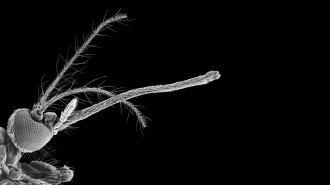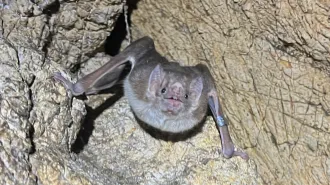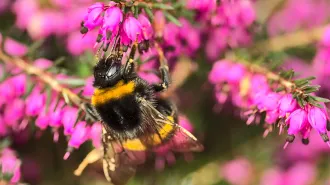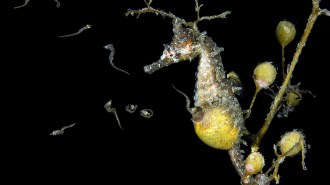The phoenix isn’t the only critter to survive the flames
Single-celled archaea and South African weevils can tolerate shockingly high heat

Certain weevils in South Africa live in the fynbos — a dry, shrub-filled area that’s prone to wildfires — and can survive scorching temperatures.
Pablo Hurtado de Mendoza
At the end of its life, the phoenix goes out in style. With a loud cry, the crimson bird bursts into flames. Then from a pile of ash, a baby bird pokes out its tiny head. The phoenix has burned, but it is born anew. This story is common to ancient Greek and Egyptian mythology. And references to the phoenix span fiction today, from Harry Potter to the anime series One Piece.
There are no real phoenixes hiding anywhere. But science has revealed that some living things can take quite a bit of heat. And like the phoenix, a few are even born from the ashes.
Some single-celled life-forms known as hyperthermophiles like it hot. These microbes live in places such as hot springs and deep-sea vents. Some are bacteria. But the toughest, hottest of all are members of the archaea, one of the three domains of life.
Not all archaea love the heat, but the ones studied by Robert Kelly, a microbiologist at North Carolina State University in Raleigh, do. The upper limit for these hardy cells is 120° Celsius (250° Fahrenheit) — well above the boiling point of water. If you step into the hot springs where they live, Kelly says, “your skin will basically just fall off your bones.” At temperatures that high, he explains, meat — including human muscle — begins to cook. Proteins fall apart.
But archaea have evolved molecular tricks that keep proteins stable in these environments. Kelly and his colleagues have found thousands of tiny relationships between molecules that help hold archaea cells together as temperatures soar.
“Nature has a lot of very subtle things [it does] to stabilize a protein,” he says.
Nature also offers heat protection to animals that are much larger than a single cell.
In South Africa, beetles called weevils live in the fynbos — a dry, shrub-filled area that’s prone to wildfires. Entomologist Marion Javal was on a hike there with her friends several years ago. As they crossed an area that recently had burned, she got inspired.
“We saw a bunch of very tiny weevils walking on the floor. But, like, very, very small insects that are not really able to fly,” says Javal, of the Institute of Research for Development in Montpellier, France. “We started wondering how and why they were here.”
Weevils able to fly would be able to escape a burn. But those that can’t fly are stuck, Javal says. Insects are ectothermic — their bodies are the same temperature as the air around them. As the air heats up during a wildfire, they do too. So how do flightless bugs survive the burn?
Javal and her colleagues collected weevils from the area and tested how much heat they could take. One species, Ocladius costiger, could survive at up to 52.6° C (126.7° F). Another, Cryptolarynx variabilis, lived at up to 53.4° C (128.1° F), the researchers reported in 2022 in Ecological Entomology.
“It was quite unexpected to try to find such high temperature for these very tiny weevils that we had in the study,” Javal says.
Like the archaea, these beetles might have some molecular adaptations in their cells that help them survive, she notes. Or perhaps the bugs dig down into the soil to flee the flames.
Other weevil species find safety in another life-form that can withstand the burn, Javal notes. These beetles lay eggs inside plants with tough, woody exteriors that act as natural fire protection. When the wildfires peter out, the weevil eggs hatch — like a phoenix from the ashes.







